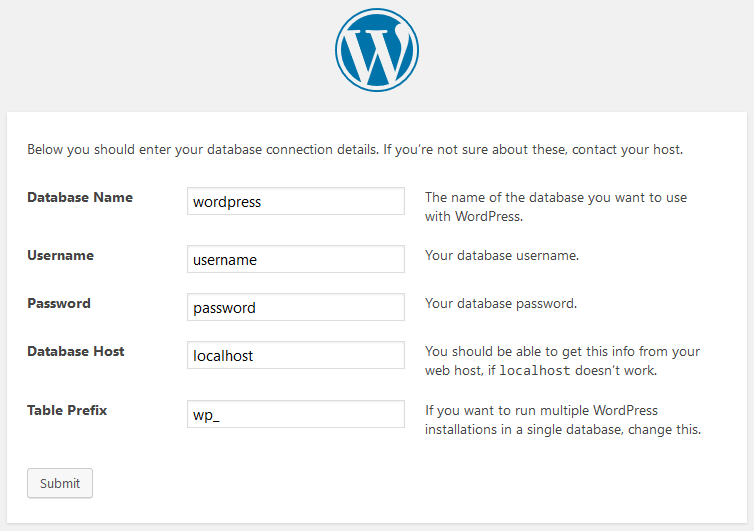Here is how you can install WordPress 5.2.3 on Ubuntu. In particular on Vultr’s instance i.e. Ubuntu 16.04 LTS / 18.04 LTS / 18.10.
Prerequisites
- Have an Ubuntu 16.04 x64 / 18.04 x64 / 18.10 x64 instance.
- Logged in as a root with sudo privileges.
- Installed Apache2 HTTP Server, MariaDB and PHP 7.2
To get started with the installation of WordPress, follow the steps below:
Step 1: Create WordPress Database
To logon to MariaDB database server, run the following commands:
sudo mysql -u root -p
Then create a database called yourname_live
CREATE DATABASE yourname_live;
Now create a database user called yourname_live_user with a new password
CREATE USER 'yourname_live_user'@'localhost' IDENTIFIED BY 'your_password_here';
And grant the user full access to the database.
GRANT ALL ON yourname_live.* TO 'yourname_live_user'@'localhost' IDENTIFIED BY 'your_password_here' WITH GRANT OPTION;
Finally, save your changes and exit.
FLUSH PRIVILEGES; EXIT;
Step 2: Download WordPress Latest Release
To get WordPress latest release, go to its official download page and get it from there. The following link is from where we can find latest WordPress archive versions.
cd /tmp wget https://wordpress.org/latest.tar.gz tar -xvzf latest.tar.gz sudo mv wordpress /var/www/html/yourprojectname
Now run the commands below to set the correct permissions for WordPress root directory and give Apache2 control
sudo chown -R www-data:www-data /var/www/html/yourprojectname/ sudo chmod -R 755 /var/www/html/yourprojectname/
Step 3: Configure Apache2
Finally, configure Apahce2 site configuration file for WordPress. This file will control how users access WordPress content. Run the following commands to create a new configuration file called yourprojectname.conf
sudo nano /etc/apache2/sites-available/yourprojectname
Copy and paste the following content into ‘yourprojectname.conf’ file and save it. Replace the highlighted line with your own domain name and directory root location.
<VirtualHost *:80>
ServerAdmin [email protected]
DocumentRoot /var/www/html/yourprojectname
ServerName example.com
ServerAlias www.example.com
<Directory /var/www/html/yourprojectname/>
Options FollowSymlinks
AllowOverride All
Require all granted
</Directory>
ErrorLog ${APACHE_LOG_DIR}/error.log
CustomLog ${APACHE_LOG_DIR}/access.log combined
<Directory /var/www/html/yourprojectname/>
RewriteEngine on
RewriteBase /
RewriteCond %{REQUEST_FILENAME} !-f
RewriteRule ^(.*) index.php [PT,L]
</Directory>
</VirtualHost>
Save the file and exit.
Step 4: Enable the WordPress and Rewrite Module
After configuring the Virtual Host above, enable it by running the following commands
sudo a2ensite yourprojectname sudo a2enmod rewrite sudo systemctl restart apache2.service
Now open your browser and browse to the server domain name. You should see WordPress setup wizard to complete. Please follow the wizard carefully.
http://your_domain_name.comFollow the on-screen instructions. i.e. select the installation language and click Continue.

You will need to know the following
Before getting started, we need some information on the database. You will need to know the following items before proceeding.
- database_name
- database_username
- database_password
- database_host
- Table prefix (if you want to run more than one WordPress in a single database)
WordPress will going to use this information to create a wp-config.php file.

Next, you should enter your database connection details and if you’re not sure about these, contact your host.

After that, click Run the installation to complete the WordPress setup.

Next, fill in the WordPress site information and then click Install WordPress

You’re done. WordPress is installed now and ready to use.


